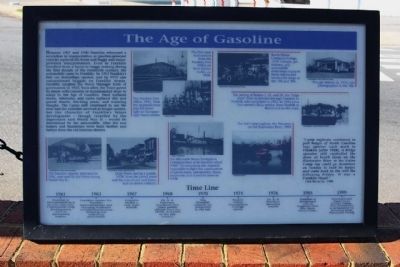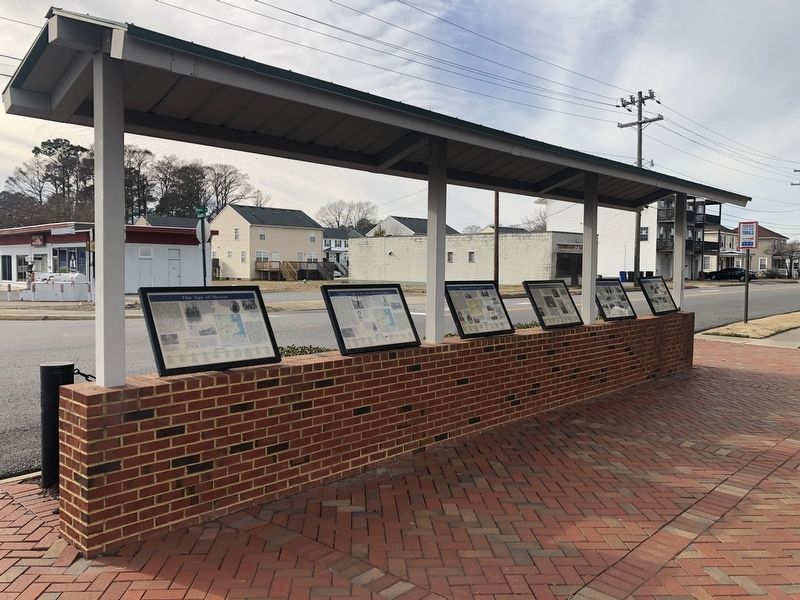Franklin, Virginia — The American South (Mid-Atlantic)
The Age of Gasoline
(Franklin, Virginia)
Between 1907 and 1930 Franklin witnessed a revolution in transportation as gasoline-powered vehicles replaced the horse and buggy and steam- powered transportation. Even as Franklin benefited from a boom in buggy making during the first decade of the twentieth century, the automobile came to Franklin. In 1913 Franklin's first car dealership opened, and by 1919 cars outnumbered buggies on Franklin streets. Franklin adopted the Town Manager form of government in 1922. Soon after, the Town paved its streets with concrete or macadamized stone to adapt to the Age of Gasoline. Hard surfaced streets, sidewalks, and curbs replaced dirt and gravel streets, hitching posts, and watering troughs. The Camp mill continued to use the river and the railroads survived as freight carriers, but the character of Franklin's future development - though retarded by the depression and World War II - would be determined by the automobile. After the war homes and businesses were built farther and farther from the old business district.
"Camp tugboats continued to pull barges of North Carolina logs upriver each week to Franklin [after 1928]. A bridge operator still controlled the draw at South Quay on the Blackwater River so the Union Camp tug could go downriver on Sunday to load its barges and come back to the mill the following Friday. It was a Franklin ritual." Park Rouse Jr., 1988
Time Line Included:
1961 - Franklin is incorporated as a second class city. Commercial strip development west of downtown begins.
1963 - Franklin creates the Franklin Redevelopment and Housing Authority to build low-income housing and redevelop downtown.
1967 - Franklin builds a new high school.
1968 - Dr. A.B. Harrison, Franklin's first black public official since the 1870's is elected to the city council.
1970 - The Franklin schools are integrated in the fall.
1971 - Paul D. Camp Community College opens.
1976 - Dr. A.B. Harrison becomes mayor.
1985 - Franklin is designated on of Virginia's first five Main Street Cities.
1999 - International Paper buys Union Camp. The downtown is devastated by flooding from Hurricane Floyd.
Topics. This historical marker is listed in these topic lists: Industry & Commerce • Roads & Vehicles. A significant historical year for this entry is 1907.
Location. 36° 40.469′ N, 76° 55.175′ W. Marker is in Franklin, Virginia. Marker is on Main Street (U.S. 258) near South Street, on the right when traveling west. Touch for map. Marker is in this post office area: Franklin VA 23851, United States of America. Touch for directions.
Other nearby markers. At least 8 other markers are within walking distance of this marker
Credits. This page was last revised on January 31, 2021. It was originally submitted on December 28, 2011, by Mike Stroud of Bluffton, South Carolina. This page has been viewed 724 times since then and 26 times this year. Photos: 1. submitted on December 29, 2011, by Mike Stroud of Bluffton, South Carolina. 2. submitted on January 31, 2021, by Devry Becker Jones of Washington, District of Columbia.

